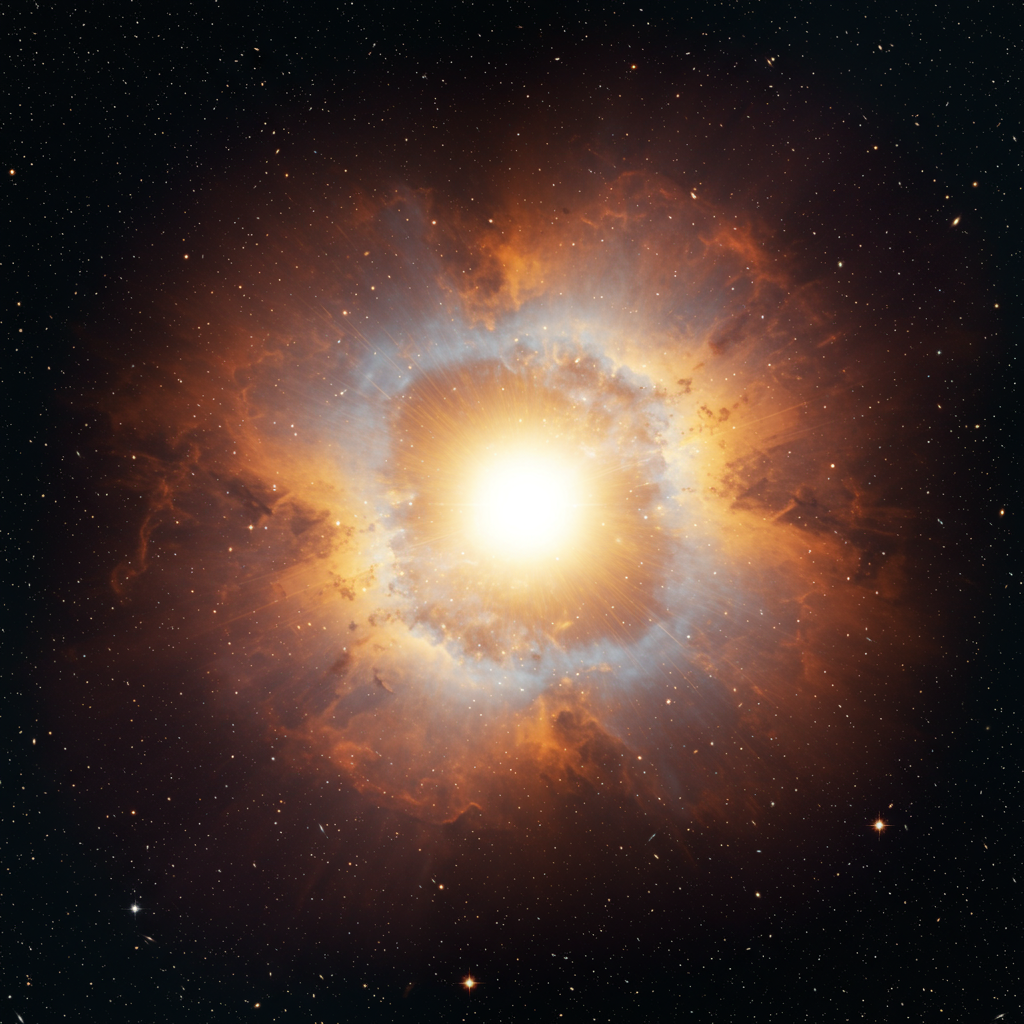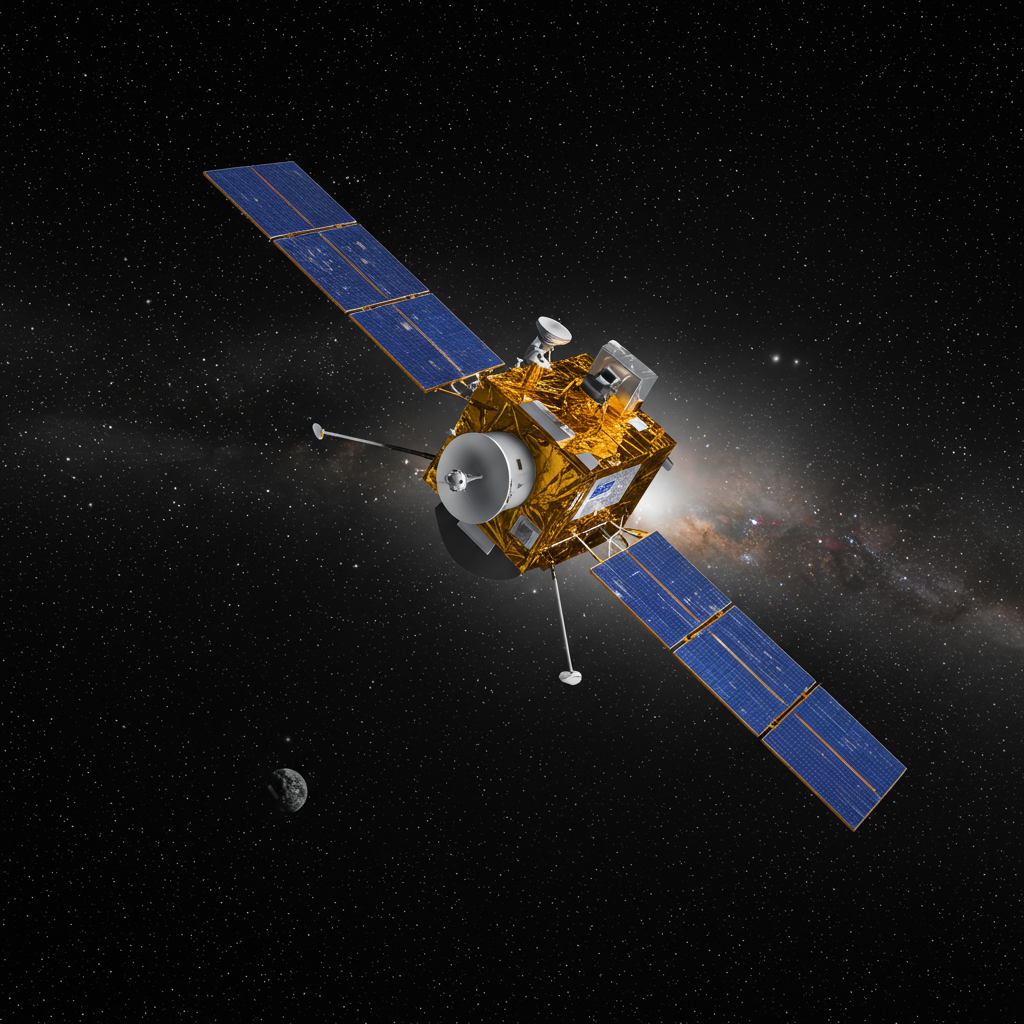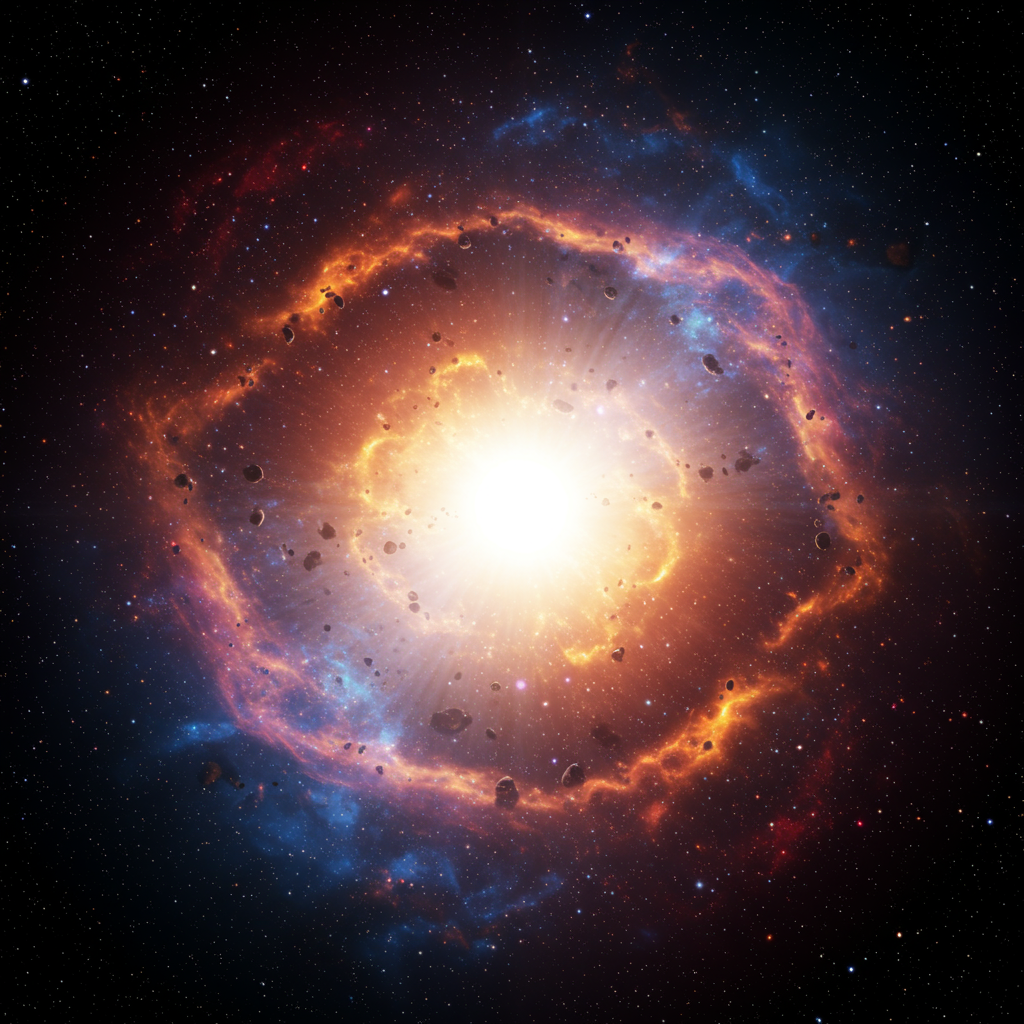Supernovae, the dramatic, explosive deaths of stars, captivate astronomers and hint at the universe’s fundamental workings. Among these stellar giants, Type Ia supernovae (SNe Ia) hold a special place. For decades, scientists have used them as “standard candles” to measure cosmic distances and the expansion rate of the universe.
However, this view is becoming more complex. It’s now understood that not all Type Ia supernovae are perfectly uniform in brightness. This variability suggests there might be different ways these spectacular explosions happen. Pinpointing the specific formation mechanism behind each Type Ia supernova is a key challenge in modern astronomy. Analyzing the light, or spectrum, emitted during these events offers vital clues.
The Language of Starlight: How Spectra Tell Tales
Astronomers classify supernovae based on the elements detected in their light spectra. Early on, Type Ia supernovae were identified by the absence of hydrogen lines, a clear contrast to Type II supernovae which show strong hydrogen features. As telescope technology advanced, revealing finer details, scientists began noticing other patterns. The presence or absence of specific elements beyond hydrogen became crucial for a more refined classification system. These elemental fingerprints are essential for unlocking the mysteries of supernova formation. They carry the story of the stellar material and the explosive process itself.
Spectral analysis allows astronomers to identify the chemical composition of distant objects. When a supernova explodes, the chaotic ejected material emits or absorbs light at specific wavelengths. These wavelengths correspond precisely to particular elements. By studying these unique “spectral lines,” researchers can determine which elements are present in the supernova debris. They can also infer information about the temperature, density, and velocity of the material.
Why Type Ia Supernovae Aren’t Always Standard
The importance of Type Ia supernovae for cosmology stems from the belief they have a consistent intrinsic brightness. This made them invaluable for measuring vast cosmic scales. However, observations have shown variations in their peak luminosity. This suggests that while they share key characteristics (like lacking hydrogen and showing silicon), their underlying ignition mechanisms might differ.
Identifying these diverse pathways is critical. It affects how accurately we can use SNe Ia as standardizable candles. Understanding the different ways a white dwarf star can explode helps astronomers calibrate them better. This leads to more precise measurements of the universe’s expansion history and properties.
Unpacking the Double detonation Model
One leading theory for how a Type Ia supernova can occur is the double detonation model. This scenario begins with a white dwarf. A white dwarf is the dense, compact remnant of a star like our Sun. In this model, the white dwarf is not alone; it’s in a binary system. It pulls material from a companion star.
This stolen material, often helium, can accumulate on the white dwarf’s surface. It forms a relatively thin outer layer or “shell.” The white dwarf itself consists primarily of carbon and oxygen in its core. When this outer helium shell reaches a critical mass or temperature, it ignites violently. This first detonation in the helium layer doesn’t destroy the star immediately. Instead, it sends a powerful shockwave inward. This incoming shockwave compresses and heats the core.
This compression and heating triggers a second, far more powerful detonation deep within the carbon-oxygen core. This core detonation completely disrupts the white dwarf. The star is annihilated in a brilliant supernova explosion. A key prediction of this model is that the initial helium detonation leaves behind some unburnt helium in the outermost layers of the expanding debris. The amount of this residual helium depends on factors like the mass of the original helium shell.
Searching for Helium’s Signature
Can this predicted unburnt helium be observed? This is the question a recent study aimed to answer. Researchers investigated whether the specific spectral signatures of helium could serve as a reliable indicator of a supernova that formed via the double detonation route.
Analyzing the light from a supernova’s ejecta requires sophisticated tools. Computational modeling is essential. These models simulate the complex physics of the explosion and how light travels through the expanding debris.
Simulating Supernova Light
Astronomers use advanced computer programs called radiative transfer codes. These codes simulate how light interacts with matter in the supernova ejecta. By inputting parameters like the elements present and their distribution, these codes can predict the resulting spectrum. This allows researchers to generate synthetic spectra – theoretical spectra based on specific explosion models. These synthetic spectra can then be compared to the spectra observed from real supernovae. This comparison helps validate or refine the theoretical models.
The authors of this study used a code named ARTIS. ARTIS is designed to incorporate detailed physics. It models processes like atomic collisions energized by the supernova’s extreme environment. This level of detail is crucial for accurately predicting the spectral features of elements like helium. To represent the double detonation scenario, they used a model of the ejecta. This model was simplified to one dimension (1D) but was based on more complex three-dimensional (3D) simulations of the explosion. Their simulations focused on the period from 1.5 to 35 days after detonation. This timeframe is particularly important as it covers when the most prominent spectral lines are expected to be observable.
A Specific Helium Clue
The simulations predicted a notable spectral feature. A strong, persistent absorption line appeared in the near-infrared part of the spectrum. This feature was centered specifically around 10,830 Ångstroms (Å). An Ångstrom is a unit commonly used for wavelengths, equal to one ten-billionth of a meter.
This specific absorption line at 10,830 Å corresponds to neutral helium (He I). Neutral helium is helium that has not lost any electrons; it’s in its un-ionized state. Its presence in the outer layers of the simulated ejecta aligns with the expectation of unburnt helium from the initial shell detonation in the double detonation model.
However, the simulations also showed something unexpected. Other helium features, typically expected in the optical range (at shorter wavelengths), were largely absent. These missing lines could have provided further confirmation of significant unburnt helium. Their absence adds complexity to the picture. Furthermore, the prominent He I 10,830 Å line showed a potential overlap. It might partially contribute to a neighboring absorption feature from magnesium (Mg II 10,927 Å). Future research will be needed to fully untangle this potential blend and understand the implications of the missing optical helium lines. Despite these nuances, the strong He I 10,830 Å feature remained a key result of the simulations.
Putting the Model to the Test: Comparing Simulations to Real Supernovae
The critical next step was to see how well the simulated spectra matched observations of real supernovae. The researchers compared their results to two well-studied Type Ia supernovae: SN 2011fe and SN 2022xkq. SN 2011fe is considered a very “normal,” canonical Type Ia event. SN 2022xkq, in contrast, is classified as a “transitional” Type Ia. It doesn’t fit neatly into the standard “normal” category and was generally less luminous. These two were chosen because extensive observational data exists for them, providing good benchmarks for comparison.
The comparisons yielded interesting insights:
Compared to SN 2011fe: The simulated He I 10,830 Å feature was noticeably stronger than observed in this classic event. This discrepancy suggests that the amount of unburnt helium assumed in the study’s specific double detonation model might be on the higher end for what’s typical in a “normal” SN Ia. This comparison highlights that even within the double detonation scenario, variations in the initial helium shell mass could lead to different spectral strengths. Future simulations exploring a range of helium masses could clarify this.
Compared to SN 2022xkq: The simulated He I 10,830 Å feature appeared slightly less prominent relative to the overall brightness compared to SN 2022xkq. This suggests the total luminosity of the authors’ double detonation model explosion sits somewhere between a normal SN Ia and a less luminous, “transitional” event like SN 2022xkq. This difference reinforces that the strength of the helium spectral signature is likely sensitive not just to the amount of helium, but also to the overall properties of the explosion and the composition of the expanding ejecta.
Promising Prospects for Supernova sleuthing
Overall, this work presents the strong He I 10,830 Å spectral feature as a potentially powerful tool. It could help astronomers identify Type Ia supernovae that originated from the double detonation mechanism. While further research is needed, particularly exploring how the spectral features change with varying amounts of initial helium, this study represents a significant step forward.
Understanding the diverse origins of Type Ia supernovae is crucial for cosmology and stellar physics. The ability to use distinct spectral lines, like the He I 10,830 Å feature, provides a concrete method. It allows scientists to look at the light from a distant explosion and infer the complex physical processes that created it. This spectral detective work is refining our understanding of these vital cosmic events.
Frequently Asked Questions
What is the double detonation model for Type Ia supernovae?
The double detonation model describes a specific way a Type Ia supernova might occur. It involves a white dwarf star with a thin outer layer of helium built up from a companion star. First, this outer helium shell detonates. This creates a shockwave that travels inward. This shockwave then triggers a second, much larger detonation within the white dwarf’s core, composed mainly of carbon and oxygen. This two-step explosion mechanism predicts that some of the initial helium will be left unburnt in the supernova’s outer layers.
How can spectral lines, like helium’s, help identify this model?
Supernova explosions eject material containing various elements. These elements leave unique “fingerprints” in the light spectrum of the explosion, appearing as absorption or emission lines at specific wavelengths. The double detonation model predicts the presence of unburnt helium in the outer ejecta. This helium should produce specific spectral lines. A recent study using simulations found that a strong line from neutral helium (He I) at 10,830 Å in the near-infrared spectrum is a potential key indicator for this specific formation mechanism.
What did comparing simulations to real supernovae reveal about the double detonation model?
Researchers compared simulated spectra from a double detonation model to observations of real Type Ia supernovae, specifically SN 2011fe and SN 2022xkq. The simulations showed the predicted He I 10,830 Å line was stronger than seen in the “normal” SN 2011fe, suggesting the model might involve a higher amount of unburnt helium than typical for such events. The feature also appeared less prominent compared to the overall brightness of the “transitional” SN 2022xkq. These comparisons indicate the helium signature’s strength likely varies depending on the exact explosion properties and the amount of initial helium.
Conclusion
Type Ia supernovae are fundamental tools in astronomy, but their diverse origins pose challenges. Pinpointing the formation mechanism of these powerful stellar explosions is crucial for refining their use as cosmic standard candles. Research exploring the distinct spectral signatures left behind offers a path forward. The study discussed here highlights the promising role of the neutral helium spectral line at 10,830 Å as a potential marker for the double detonation model. While more detailed simulations varying the initial helium mass and further observational comparisons are needed, this work provides an important step. It strengthens the possibility of using spectral analysis to decode the complex stories of Type Ia supernovae and better understand these vital cosmic events.




